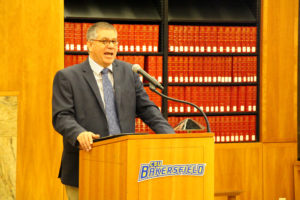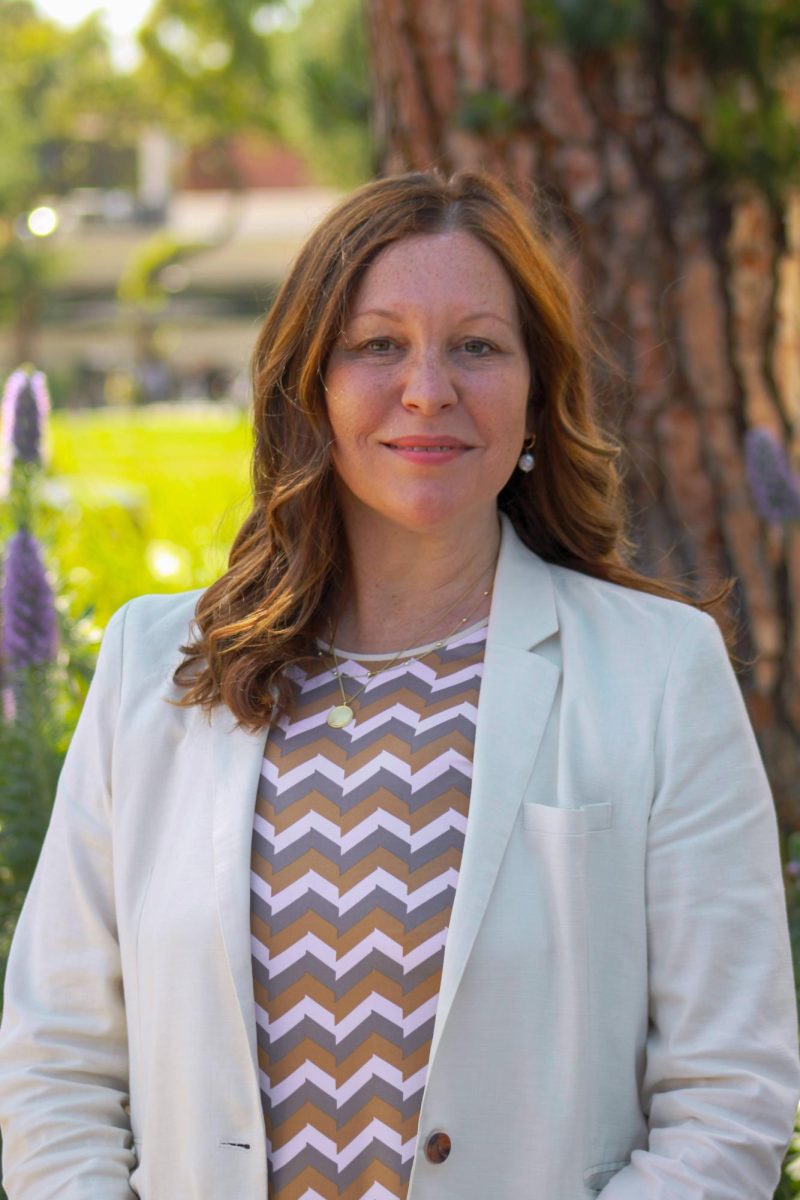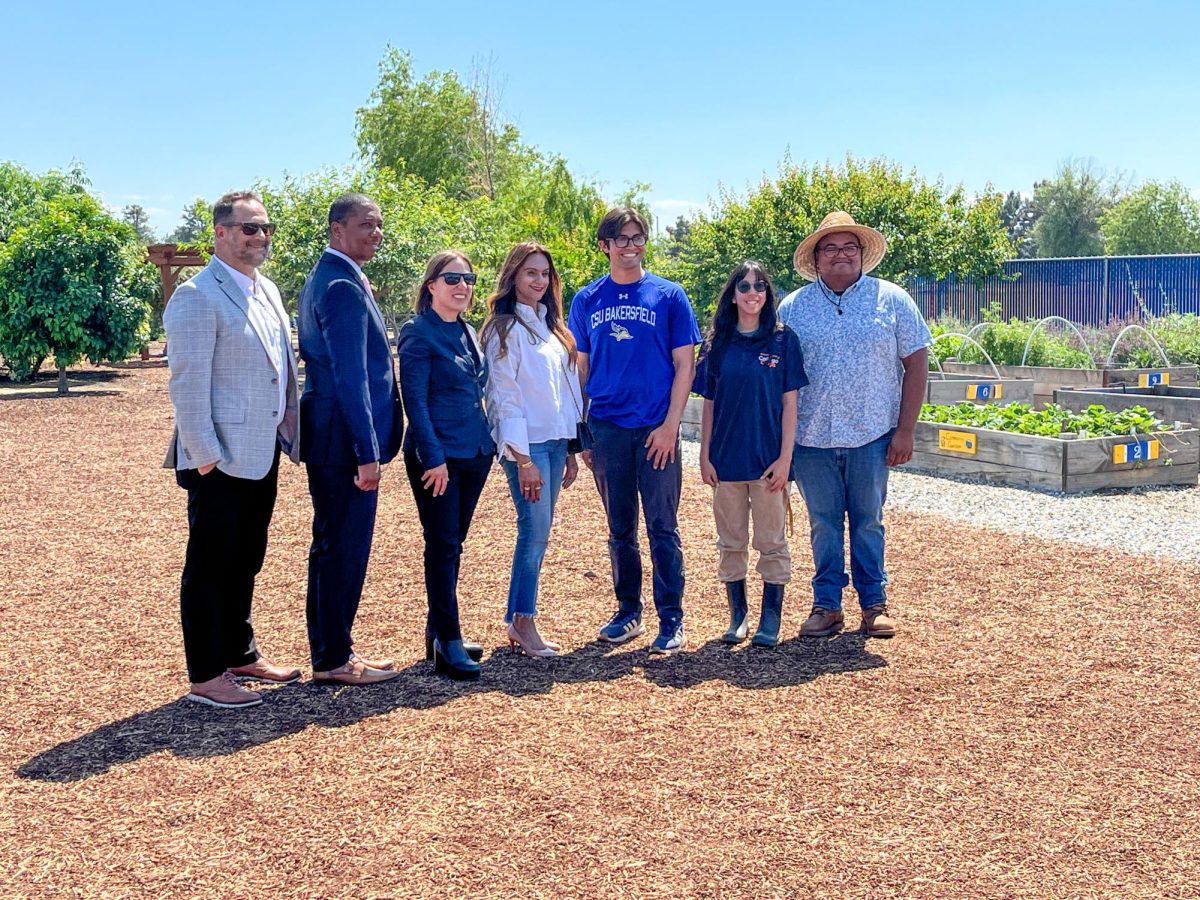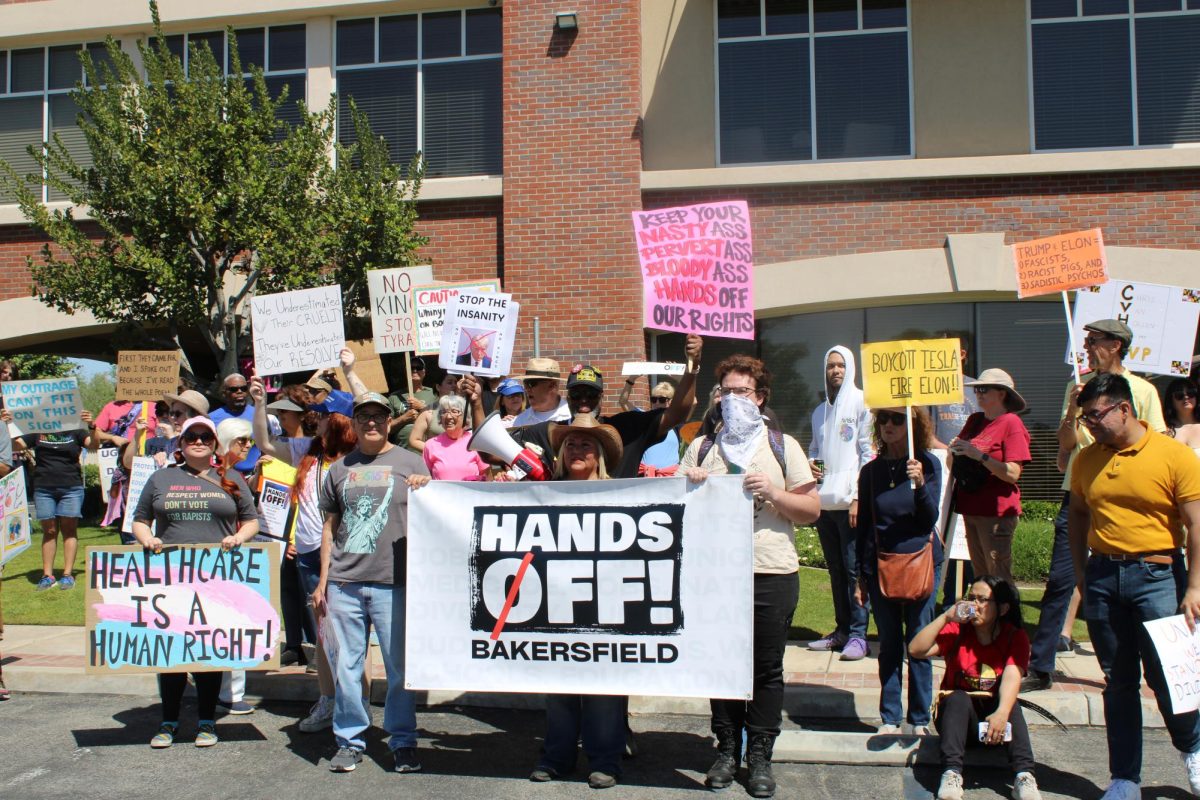By Christopher Sanchez
Reporter
In the heated debates on health care, we forget that Native Americans have a right to health care. The United States has never made a true effort to fulfill their end of the numerous treaties they signed with Native Americans.
On Feb. 13, Mark Trahant discussed “Rethinking Native Health,” in the Dezember room at the Walter Stiern Library at CSU Bakersfield. Trahant discussed the transitions of his career, the digital age, and Indian Health Care.
Like many journalists, Trahant found himself unemployed after the Seattle Post announced it was closing its business. He decided eight years ago to cover healthcare reform and the Indian health care system during the time the Affordable Health Care Act was being drafted.
The Kaiser Foundation granted Trahant a 14 month fellowship that allowed him to write what he wanted.
“I had this flexibility where I didn’t have to worry about a paycheck. I could focus on what I wanted to focus on and could give away anything I wrote, to anyone who wanted to use it for free,” said Trahant. “That ended up being the perfect tool for the modern digital age. Newspapers were using my material and building an audience larger than I had in Seattle.”
Trahant explained the importance of social media during the protests at Standing Rock.
“I like to think of Standing Rock as one chapter in a long story,” said Trahant. “More than 10,000 people from across the country saw something on social media and picked up and traveled to North Dakota. The Standing Rock story has been repeating the same story, that water is life.”
Trahant used the story of Standing Rock to transition into talks of Native Health. His speech came down to three topics: shortages, excellence, and the future.
“On shortages, healthcare is a specific treaty right for most Indian people,” said Trahant. “A nurse and a doctor will be provided. This has become a metaphor for healthcare provisions. But from the very beginning, from when those treaties were signed, there’s never been a United States Congress that has appropriated the money. From the beginning, the United States has really failed on sending that help.”
Commissioner of Indian affairs Thomas J. Morgan calculated the resources and the disparity between Native Americans receiving healthcare and those in the armed forces receiving healthcare, right before the turn of the century. He concluded that the Navy spent $48.10 for every sailor, while the appropriation for the Indian Health Service was a $1.25 per Native American.
“I never knew Native Americans had their own health care system,” said Randy Kim, a senior accounting major. “These health care issues never go away.”
While shortages are always a part of the story, often excellence gets overlooked.
“If the United States wants to learn how to make the national healthcare system work, then they should study the Indian healthcare system,” said Trahant. “There are so many innovations that they often are forgotten.”
These innovations included a Community Healthcare Representative, tele-medicine, and dental health therapy. Tribes looked at the problems they had and didn’t turn to ask for more funds. Instead, they solved their own problems by focusing on the needs of the tribe and community.
For example, in rural Alaska, dentistry was non-existent. They could not get a dentist to set up a practice. The Alaskan Tribal Health Consortium proposed the idea of training people in their own community to learn dentistry. The program that was set up takes kids right out of high school and places them in an intensive two year program.

Mark Trahant discusses Native American health at CSUB.
“This is a way to lower health care costs, to use mid-level people from a community, who aren’t going anywhere. They won’t be recruited to a bigger city,” said Trahant.
Lastly, the future is still being written for the Indian healthcare system. Healthcare is constantly changing. It needs to embrace this change by utilizing all the new technology at its disposal and employing problem solvers who can look past funding.
“This brought a light to some issues I had never heard of,” said Zachary Reese, graduate student in healthcare. “These issues were invisible to me before tonight.”







